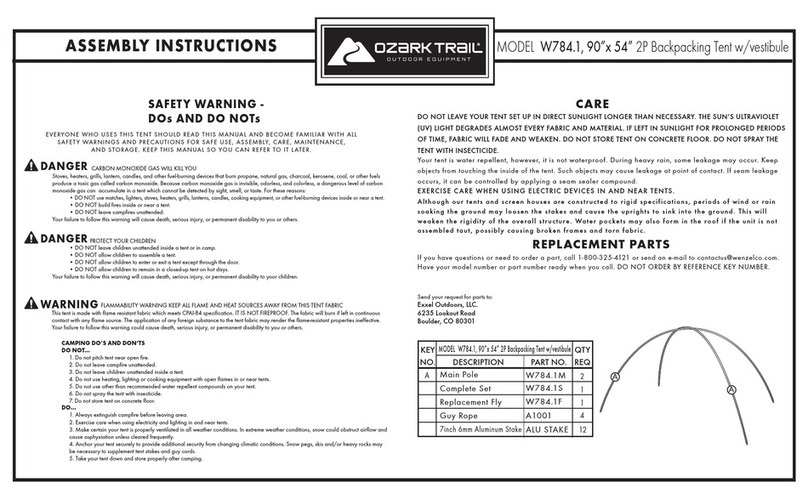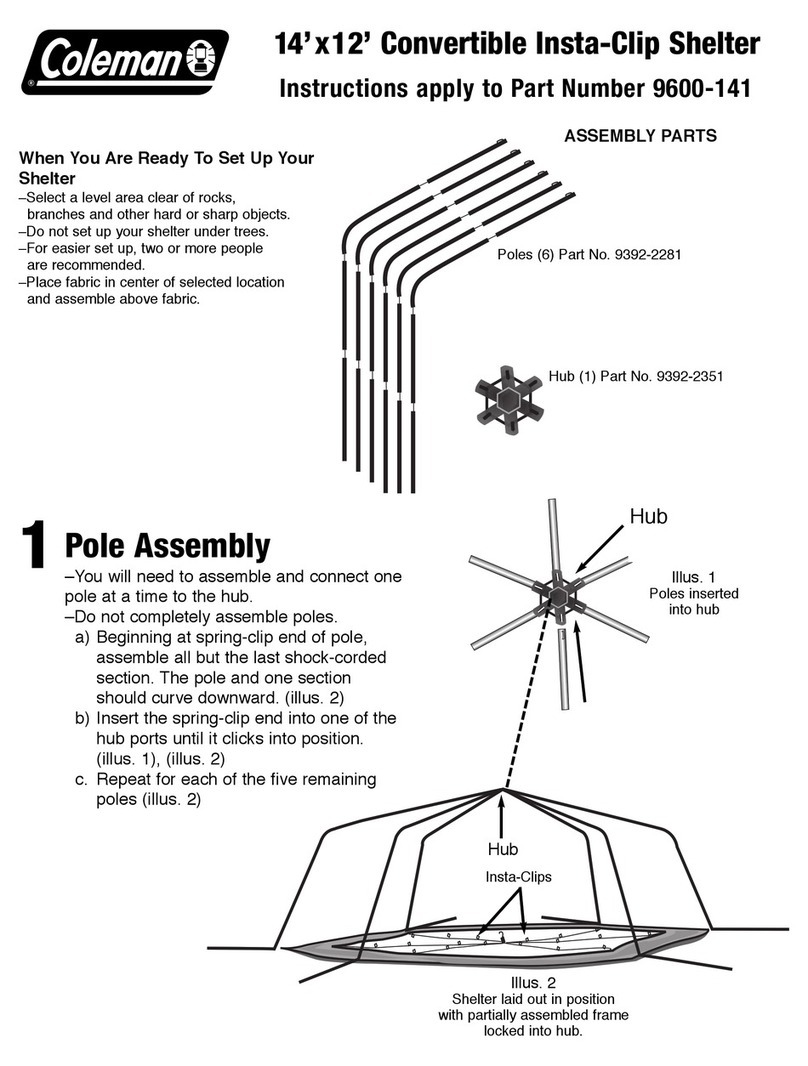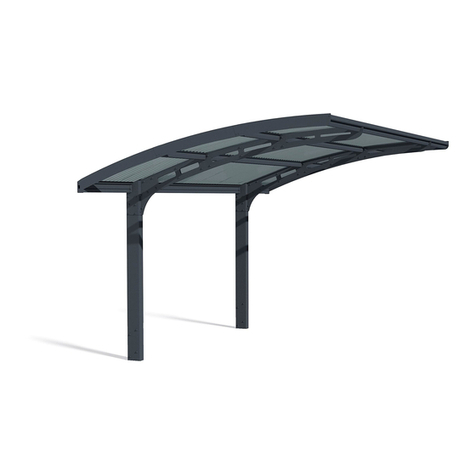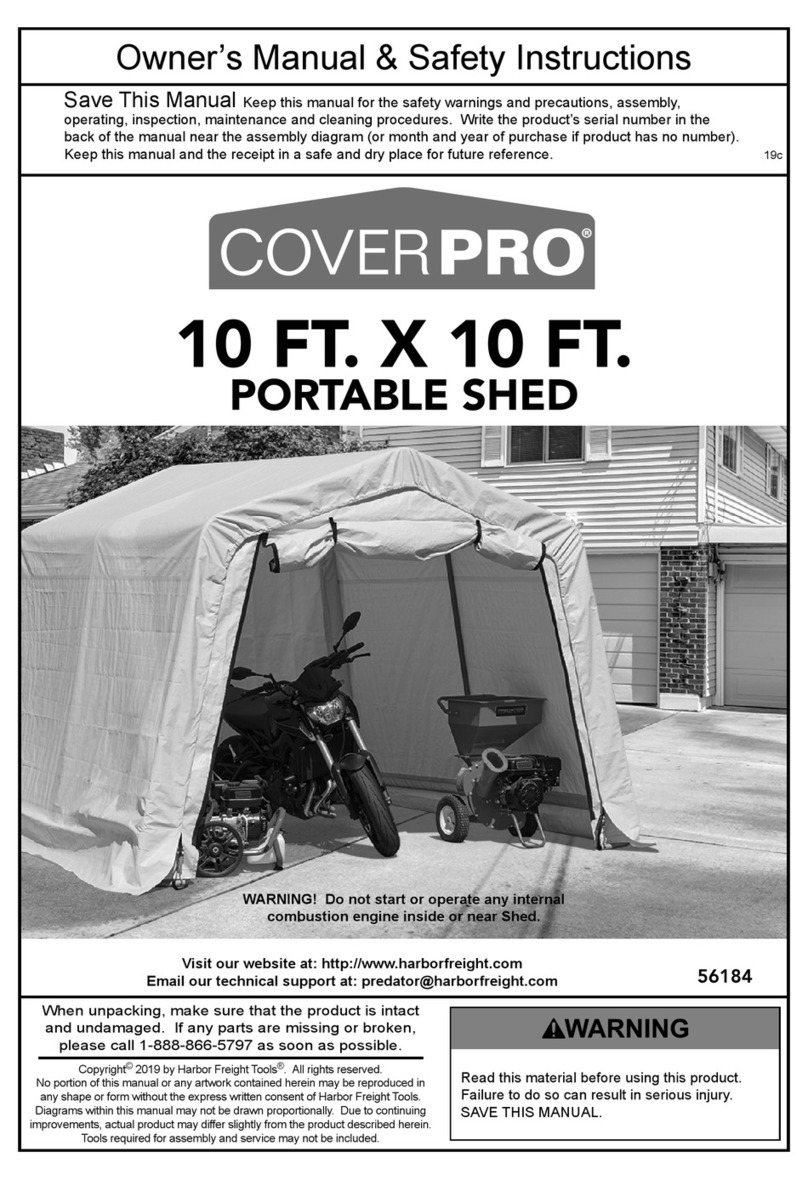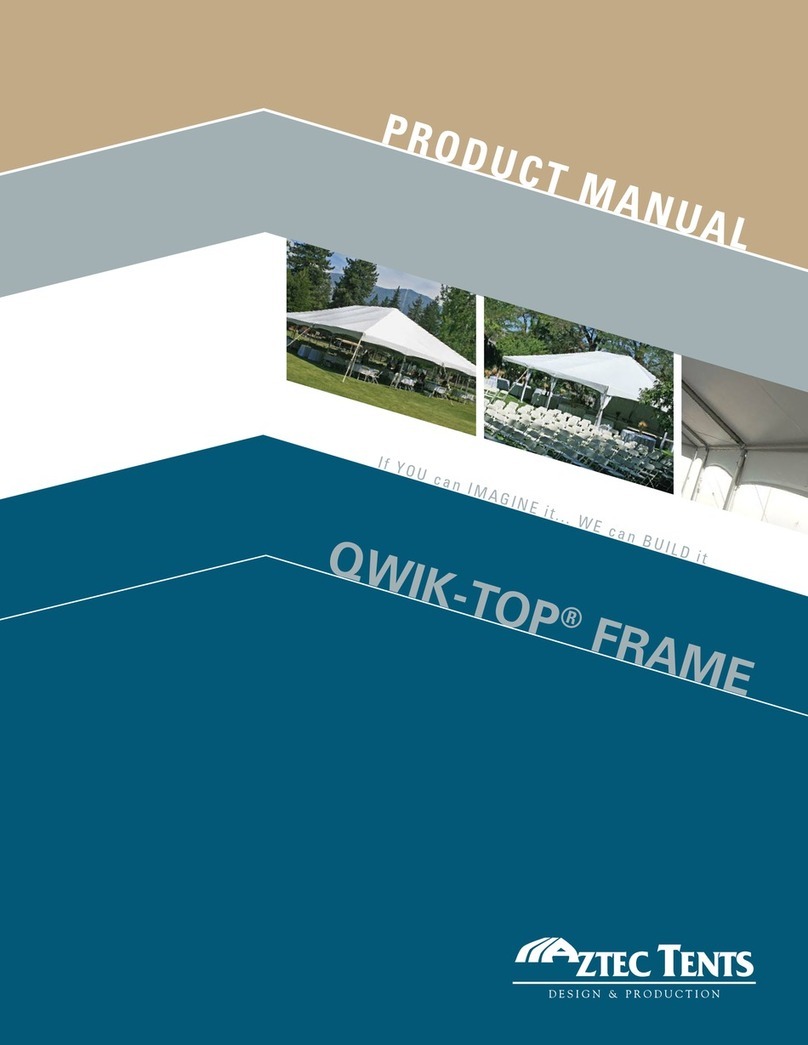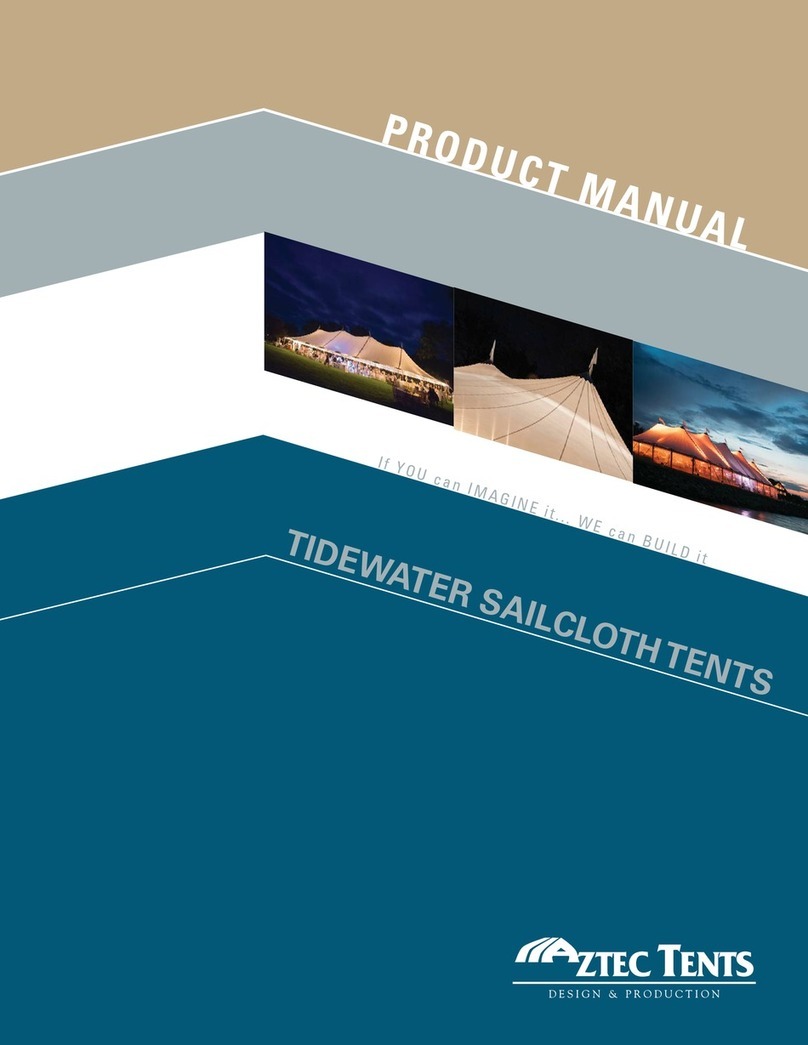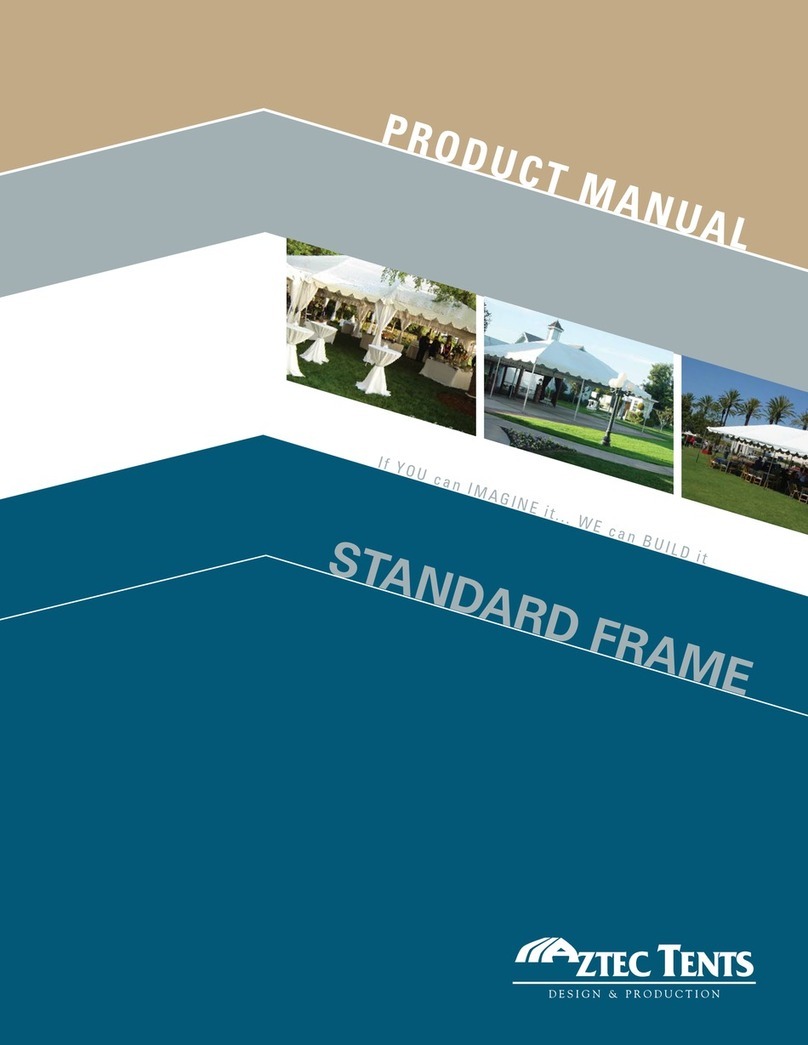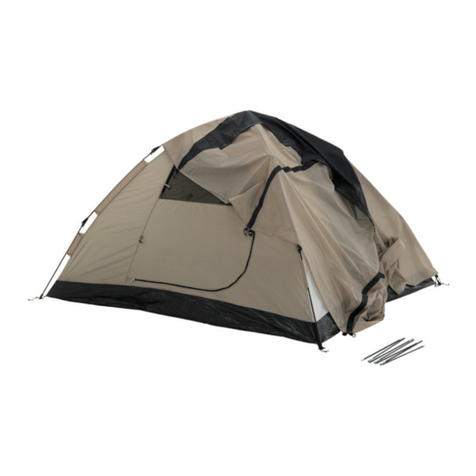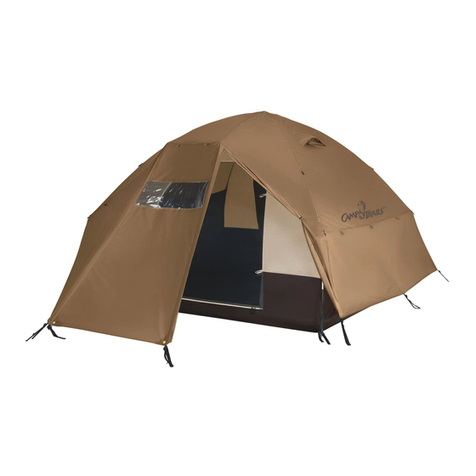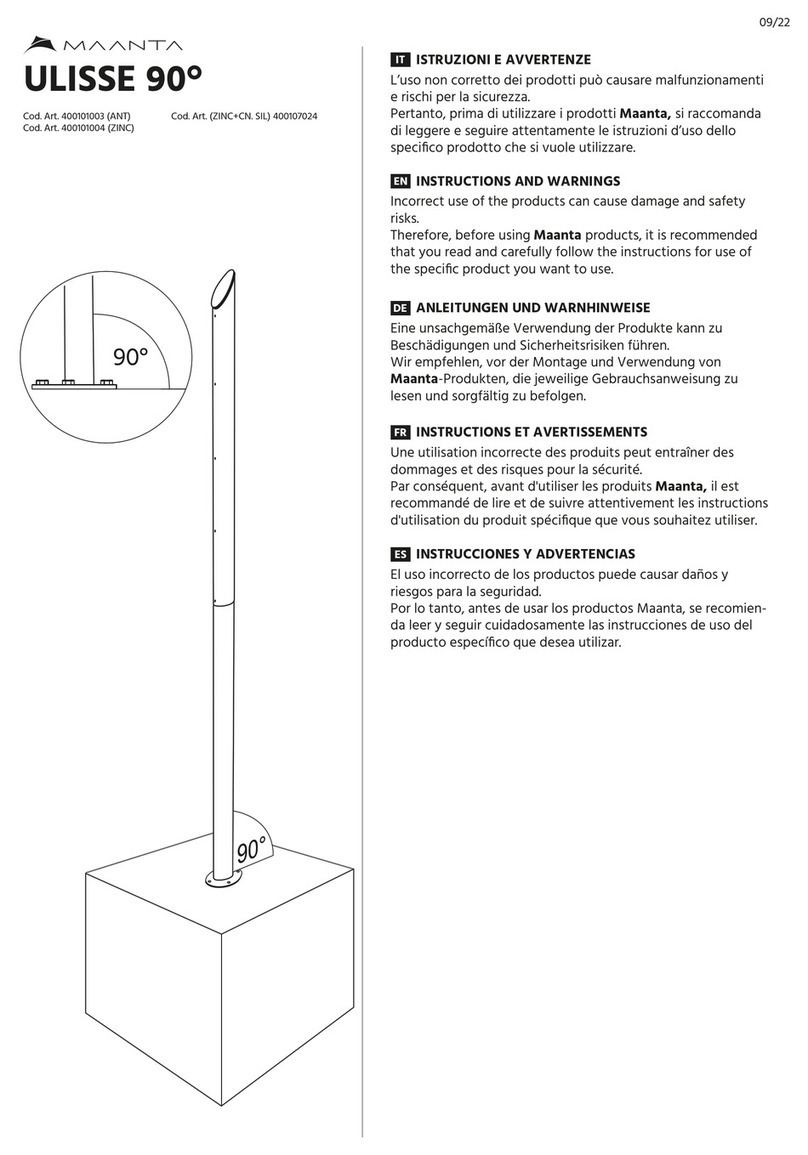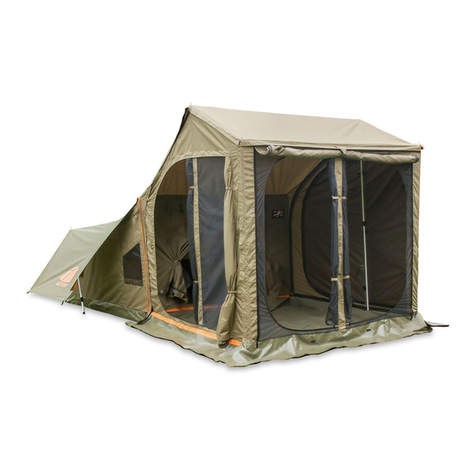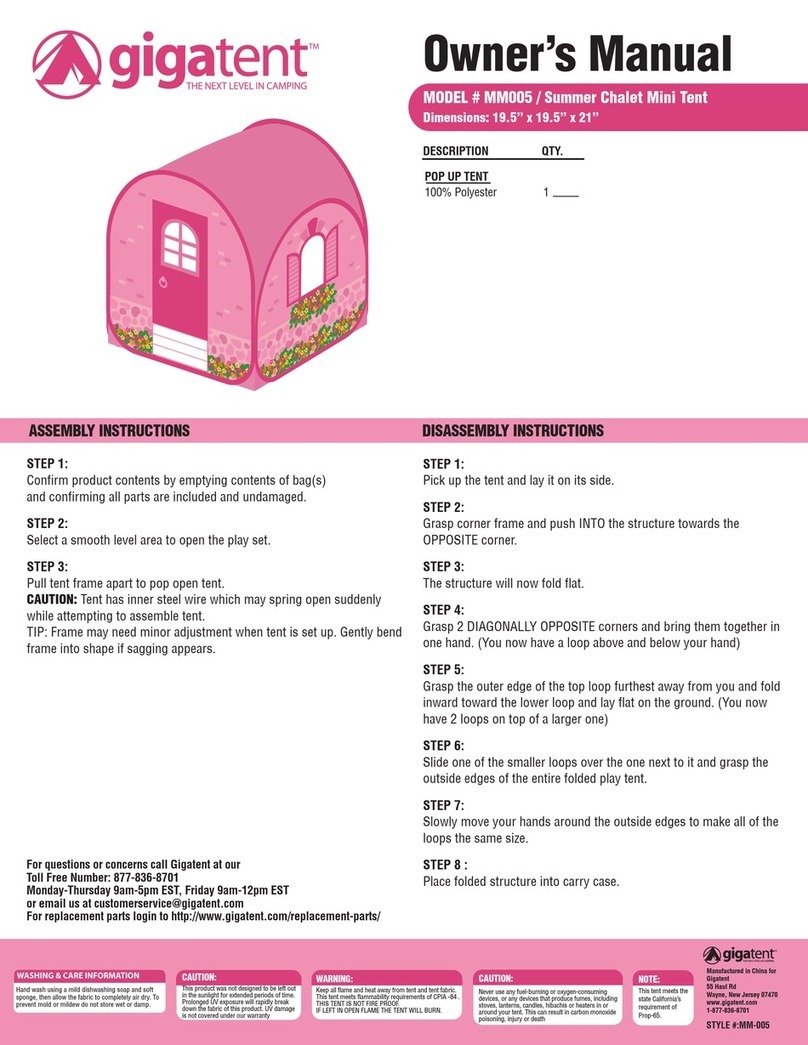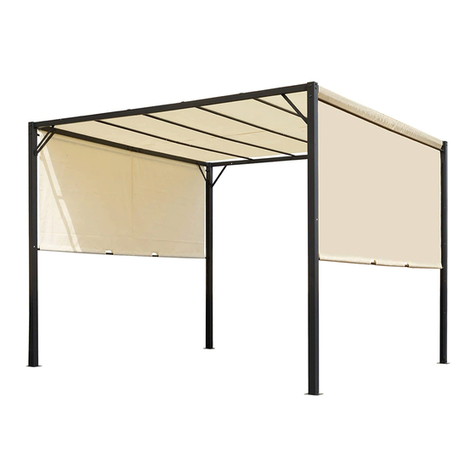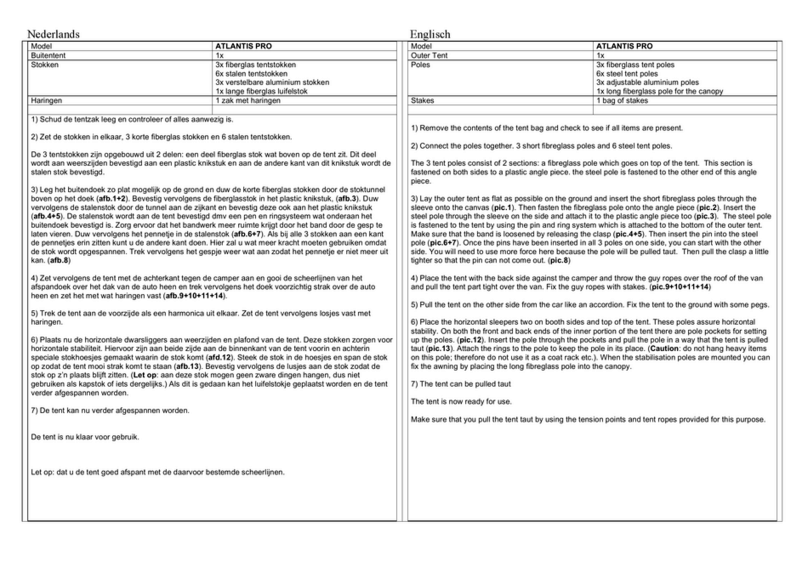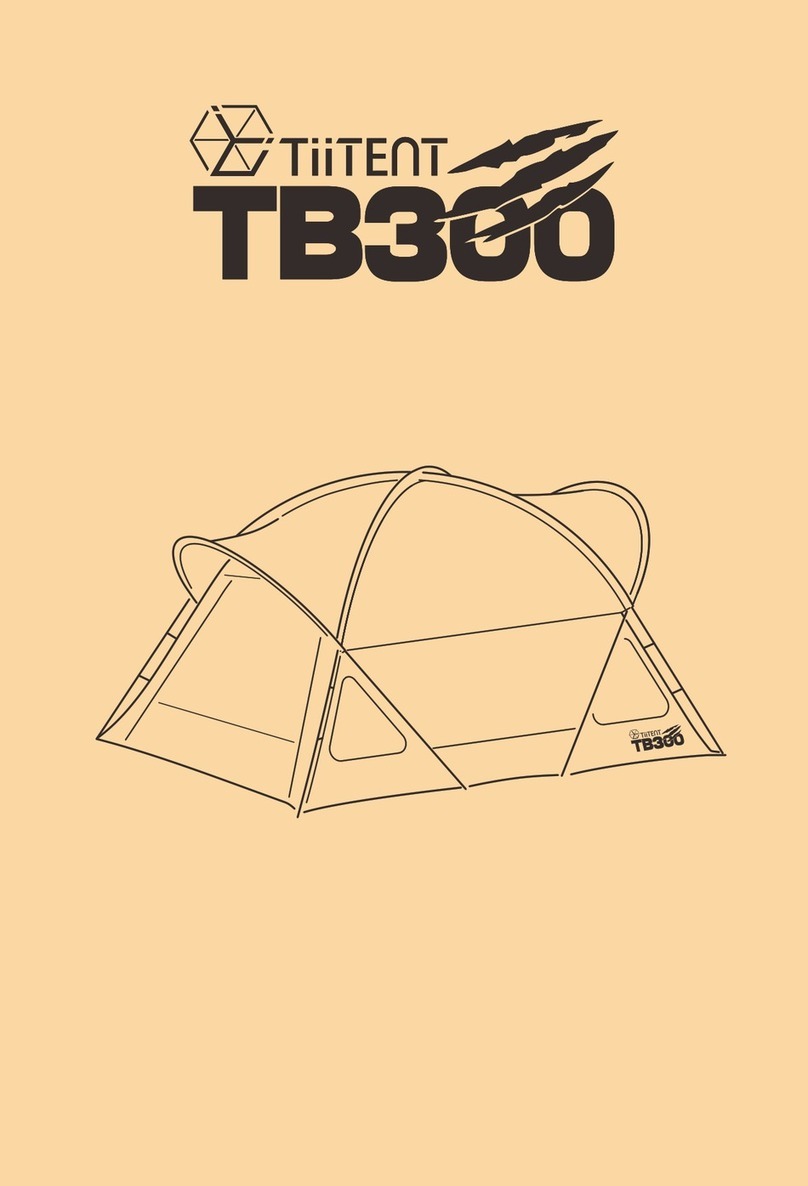
www.aztectent.com
General Fabric Care & Maintenance
The vinyl fabric developed for this tent system requires specific attention during installation, cleaning, and storage to maintain its
maximum life span. Please follow the following care and maintenance guidelines provided for this product.
GROUND CLOTHS:The usage of ground covering material under the tent during installation and dismantle will protect the tent fabric
from soiling and from minor surface abrasions. A ground cloth can also help keep the tent top dry if the ground surface ( i.e. dirt, grass,
etc.) is wet during the installation or dismantle.
MILDEW TREATMENT:The fabric is pretreated with mildew inhibitors that help prevent the growth and spreading of mildew and
fungus. Although treated, proper care should be given to prevent potential growth. If you see mildew wipe it away immediately with a
clean towel and diluted soap solution. Never fold your fabric for storage if the fabric is even slightly wet. Mold/Mildew spores in the air
and on the ground will come in contact with the fabric while installed.To grow, all the mildew needs is moisture and some source of
food (often found in dirt that might be on the tent).Your best bet is to keep your fabric clean and dry to prevent mildew growth.
FABRIC CLEANING:The best way to clean the vinyl tent fabric is with a soft towel or soft bristled brush immersed in a diluted solution
of warm water and our tent cleaning solution. A diluted and mixed solution of a tablespoon of traditional dish soap with a gallon of
warm water will also work, but extra caution should be placed on insuring that this cleaning solution is thoroughly rinsed from the
fabric, especially with clear vinyls (See special notes on working with clear vinyls).
You will need a large, smooth, flat space slightly larger than the section of fabric. This space should be covered with a ground
protecting layer to avoid damaging the tent membrane when moving in the washing area. Small impediments, sharp objects and
rough surfaces all have the potential to damage the membrane you are trying to clean.
Follow the instructions for the proper dilution ratio of your cleaning product. Apply the diluted solution directly to the fabric using
1) a towel immersed in the solution, or 2) a spray bottle or larger pressurized spraying apparatus to evenly cover the fabric with the
solution. Let this sit on the fabric for about one minute to allow the mixture to penetrate the fabric. Using a soft towel or soft bristled
polypropylene brush (some can be mounted to a long handle to allow you to stand while working), gently work the cleaner into
the fabric using only mild pressure. While harder bristled brushes can work, they will end up microscopically scratching the fabric,
potentially permanently damaging the fabric and making it harder to clean the next time. The process of hand cleaning the fabric will
allow you to apply only enough diluted solution to get the fabric clean.This will help limit the amount of water placed on the fabric to
expedite drying time. Never allow the tent cleaner to dry on the fabric. For this reason, larger tents might be better to clean in sections.
Once the cleaning is complete be sure to rinse away any cleaning solution completely from the tent membrane.
Full immersion of the fabric in water is not recommended.The use of commercial front loading or top loading washing machines is
not recommended and will void the warranty of the fabric. These machines cause an excessive amount of stress to the fabric and can
force water into the fabric causing increased occurrences of mildew growth and shorten the life of the fabric. As with any cleaning, the
fabric should be hung to dry completely before folding and storage. Cleaners that include chlorine bleach, and/or any petroleum based
solvents will degrade the fabric, discolor the fabric and shorten its life span.
If you have a difficult stain that cannot be removed with traditional cleaning, please consult with your sales person before trying any
other chemicals that might end up damaging the material further. Do not use other chemicals or cleaners unless instructed by your
sales professional.
FABRIC DRYING:The best way to dry the vinyl tent fabric is to hang-dry in a low humidity environment. Circulating air around
the surface of the hanging fabric with the use of fans will also speed the drying process and improve drying time in more humid
environments. Please also assure that subassemblies and other components within the tent system are dry before folding.These
subassemblies can be reinforcements, lace lines, webbing, rope, thread, and/or any other part that is permanently affixed to the main
tent membrane.The use of commercial drying equipment and any drying using heat will void the warranty of the fabric. DO NOT
STOREYOUR FABRIC WET. Fabric folded and stored wet will mildew.
TENSIONING: Do not over tension your tent fabric during installation, use, or removal. Over tensioning can cause permanent damage
to the tent membrane.The most obvious sign of over tensioning would be stress wrinkles at the tension points. Be sure to confirm that
your frame/pole components match the tent design. In cases where the ground is not level, over tensioning is possible by trying to
force the tent to dimension.
STORAGE RECOMMENDATIONS:The fabric for the tent system shall be stored dry in a cool, dry place in the protective storage
bags included with your purchase. Other types of bags are acceptable as long as they can protect the fabric from the environmental
elements of the storage area. Optimal storage temperature is between 50°F and 70°F.
INSPECTION: Prior to each use, each component of the tent system needs to be thoroughly inspected to assure its structural stability
has not been compromised. Fabric components that are ripped, torn, frayed, or damaged shall be immediately replaced and not used.
Structural components of the fabric membrane are the most critical including but not limited to the main fabric membrane, structural
reinforcements and webbing, web termination plates/rings/fasteners, and connection points from fabric panel to fabric panel or
connection points between the fabric panel and the hardware support system.

